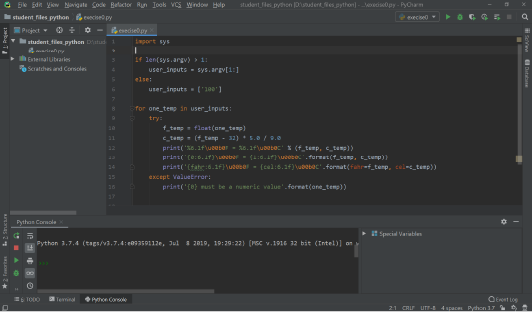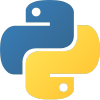

AI for Python Training
4 days (10:00 AM - 5:00 PM Eastern)
$1,725.00
Register for a live online class.
Details
Subjects Covered
Prerequisites
Setup Requirements
Details
Course Details
Artificial Intelligence (AI) is the creation and study of “intelligent agents” – software devices that perceive their environment and take actions that maximize their chance of successfully achieving their goals.
Python is a high-level, interpreted, highly extensible, object-oriented language that consistently ranks as one of the most popular programming languages for working with AI. With its comprehensive standard library and a large community of extensions, it can be used to create a diverse array of types of programs.
This course will assist students in learning about which algorithms should be used in a given context, as well as teaching them how to create AI building blocks using standard data mining techniques, using examples gathered from real-world applications.
Subjects Covered
- Introduction
- What is Artificial Intelligence?
- Applications of AI
- Branches of AI
- Building Agents
- Development Environments
- Classification and Regression
- Supervised vs. Unsupervised Learning
- What is Classification?
- Preprocessing and Encoding
- Types of Classifiers
- What is Regression?
- Building Regressors
- Predictive Analytics
- What is Ensemble Learning?
- Using Decision Trees
- Random Forests
- Finding Optimal Training Parameters
- Computing Relative Feature Importance
- Pattern Detection and Unsupervised Learning
- What is Unsupervised Learning?
- Clustering Data With K-Means
- Estimating Clusters With Mean Shift
- Gaussian Mixture Models
- Affinity Propagation Models
- Recommender Systems
- Building Recommender Systems
- Creating a Training Pipeline
- Extracting Nearest Neighbors
- Computing Similarity Scores
- Collaborative Filtering
- Logic Programming
- What is Logic Programming?
- Solving Problems With Logic Programming
- Matching Mathematical Expressions
- Validating Primes
- Heuristic Searches
- Heuristic Search Techniques
- Constraint Satisfaction Problems
- Local Search Techniques
- Solving Problems With Constraints
- Genetic Algorithms
- Evolutionary and Genetic Algorithms
- Fundamental Concepts
- Generating a Bit Pattern
- Visualizing the Evolution
- Solving the Symbol Regression Problem
- Building Games
- Using Search Algorithms in Games
- Combinatorial Search
- Minimax Algorithm
- Alpha-Beta Pruning
- Negamax Algorithm
- Building Game Bots
- Natural Language Processing
- Tokenizing Text Data
- Converting Words to Base Forms
- Dividing Text Into Chunks
- Extracting Word Frequencies
- Topic Modeling Using Latent Dirichlet Allocation
- Probabilistic Reasoning
- Understanding Sequential Data
- Slicing Time-Series Data
- Extracting Statistics from Time-Series Data
- Generating Data Using Hidden Markov Models
- Identifying Alphabet Sequences
- Speech Recognizers
- Working With Speech Signals
- Visualizing Audio Signals
- Transforming Audio Signals to the Frequency Domain
- Generating Audio Signals
- Synthesizing Tones
- Extracting Speech Features
- Recognizing Spoken Words
- Object Detection and Tracking
- Frame Differencing
- Tracking Objects Using Colorspaces
- Tracking Objects Using Background Subtraction
- Optical Flow Based Tracking
- Artificial Neural Networks
- Building a Perceptron Based Classifier
- Single Layer Neural Networks
- Multilayer Neural Networks
- Vector Quantizers
- Reinforcement Learning
- Understanding the Premise
- Reinforcement Learning vs. Supervised Learning
- Building Blocks of Reinforcement Learning
- Creating an Environment
- Building a Learning Agent
- Deep Learning and Convolutional Neural Networks
- What are Convolutional Neural Networks?
- Architecture
- Types of Layers
- Building a Perceptron Based Linear Regressor
Prerequisites
Before Taking this Class
Students should have solid experience in writing programs using Python.Setup Requirements
Software/Setup For this Class
Python 3 or higher and Anaconda.
Onsite Training
Do you have five (5) or more people needing this class and want us to deliver it at your location?

